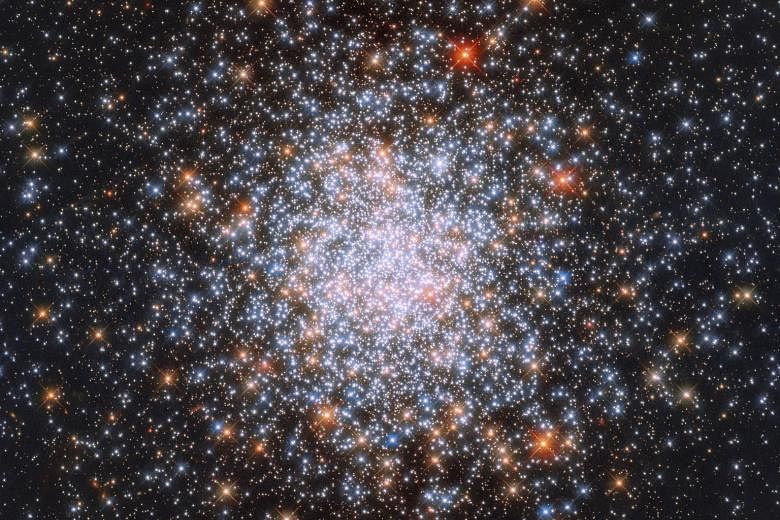In one of those exercises that you think should be impossible or perhaps a punishment for some infraction, a team of astronomers has now measured the total amount of light that has ever been produced by all the stars in our universe.
The answer, expressed in terms of quantum particles of light known as photons, is four trillion trillion trillion trillion trillion trillion trillion. In scientific notation it is 4 x 1084, or 4 followed by 84 zeros: 4,000,000,000,000,000,000,000,000,000,000,000,000,000,000,000,000,000,000,000,000,000,000,000,000,000,000,000,000.
That number, reported in the journal Science by Dr Marco Ajello, an astrophysicist at Clemson University, and his colleagues, sounds big. But in the grand cosmic scheme of things all of this light provides about as much illumination as a 60W bulb seen from 4km away.
Astronomers estimate that the observable universe - a bubble 14 billion light-years in radius, which represents how far we have been able to see since its beginning - contains at least two trillion galaxies and one trillion trillion stars.
Most of these stars and galaxies are too far and too faint to be seen with any telescope known to humans. But that doesn't matter, Dr Ajello and his colleagues say: All the energy ever radiated by these stars is still with us, filling the universe with a sort of fog, a sea of photons known as the extragalactic background light.
Written in this starlight is the whole history of the birth and death of stars in the universe, from its beginning 13.7 billion years ago to its fraught present, which is why Dr Ajello and his team wanted to measure it. They sought to dissect this fog and its history using data from the Fermi Gamma-ray Space Telescope, a satellite that was launched in 2008 to study gamma rays, the most energetic form of electromagnetic radiation in the heavens.
Among the oddities visible to this telescope are galaxies known as blazars, which are basically quasars or massive black holes that shoot out beams of high-energy gamma rays that happen to point right at Earth.
As gamma rays travel through space, they can collide with photons in the extragalactic background, producing pairs of electrons and losing a bit of energy in the process. Dr Ajello and his team, using a decade's worth of data collected by the Fermi telescope, measured the amount of gamma-ray energy thus lost from 739 blazars and one explosion known as a gamma-ray burst. The blazars ranged in distance from 200 million light-years to 11.6 billion light-years.
Having calculated the energy lost to photon collisions across that distance (which, of course, is also time), the researchers could then determine the intensity of background light at various periods in cosmic history. They then could reconstruct the emergence of stars and galaxies starting about one billion years after the Big Bang.
According to Dr Ajello's data, the birthrate of stars rose slowly for the next two billion years, reaching a maximum about 10 billion years ago. It's been downhill ever since. Stars are still being born, but the universe seems to be approaching senescence. Today, about seven stars are born each year in our own galaxy, the Milky Way.
If the starlight is dying, however, the universe as a whole might not notice enough to rage. Despite all those photons, starlight makes up only one-millionth of the light in the universe, Dr Ajello said. Far more photons were made in the Big Bang and now reside in the sky as the so-called cosmic microwaves.
That is to say, 1,090 little packets of primordial energy, more or less. Let there be light, indeed.
NYTIMES

